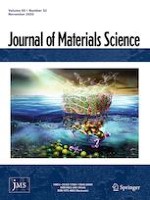10.08.2020 | Review
A critical review of piezoresistivity and its application in electrical-resistance-based strain sensing
Erschienen in: Journal of Materials Science | Ausgabe 32/2020
EinloggenAktivieren Sie unsere intelligente Suche, um passende Fachinhalte oder Patente zu finden.
Wählen Sie Textabschnitte aus um mit Künstlicher Intelligenz passenden Patente zu finden. powered by
Markieren Sie Textabschnitte, um KI-gestützt weitere passende Inhalte zu finden. powered by
